Win local search. Book better flooring jobs. Rank with flooring SEO that ends price wars and fills your calendar, trusted by 75+ flooring companies.
5.0

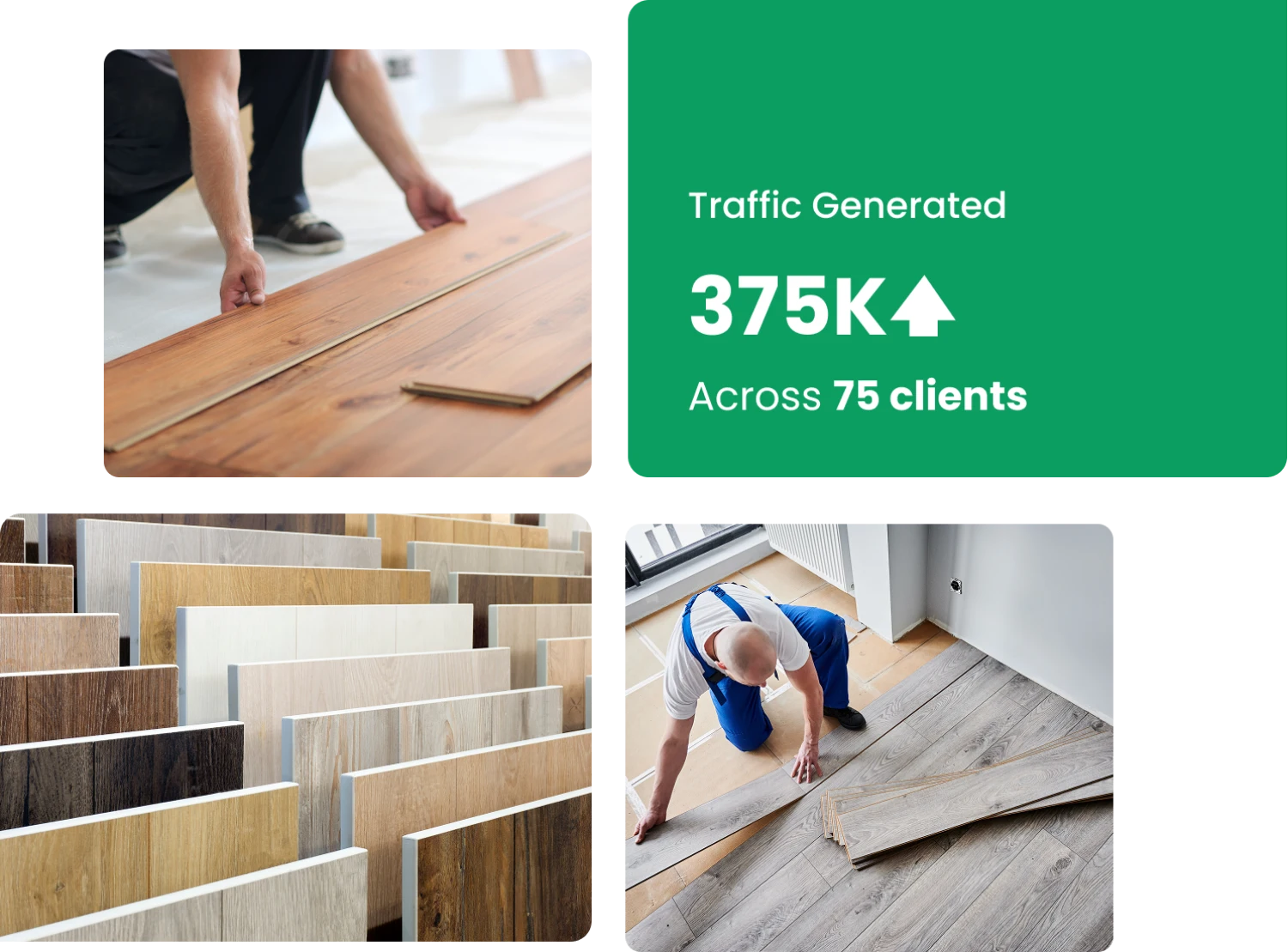

With 150,000-200,000 flooring companies competing nationwide, most owners face the same uphill battle: long sales cycles, constant price wars, and customers chasing the cheapest bid. Even great work isn’t enough when supply delays, thin margins, and packed schedules keep you from growing.
That’s why the flooring companies that scale don’t just rely on craftsmanship; they rely on systems. Flooring SEO is one of those systems: raising your visibility where buyers search, capturing demand, and turning visits into qualified leads.
Our flooring SEO agency has helped 75+ flooring businesses build predictable lead funnels that work. At the same time, they attract quality clients who value expertise and finally break free from the “lowest price wins” trap. Let’s see how we can do the same for you.
Now that you see what flooring SEO can achieve, let’s accomplish that in practice, step-by-step, starting with keywords.
When homeowners move into a new place, the floors are one of the first things they notice. If the hardwood looks worn, they’ll Google “hardwood flooring replacement” or “floor refinishing near me.”
If they need new floors altogether, they’ll search for “flooring installation services near me.” Even small jobs spark searches like “floor repolishing” or “floor demolition and replacement.”
That’s why you need to know exactly which keywords match your flooring services, and what people are typing into Google. Start by listing the services you want to promote, such as:
Here are some of the most common flooring services:
Then, use SEO tools like SEMrush, Ahrefs, or Google Keyword Planner. Enter phrases such as “vinyl floor installation” or “hardwood refinishing.” These tools show what’s trending, how competitive each keyword is, and which ones have substantial search volume but low difficulty (the sweet spot for faster rankings and early traffic).
See below an example of what keywords Ahrefs will show around “flooring installation.”

Pro Tip: Use Google itself for quick keyword ideas. Check the top-ranking titles, People Also Ask, and Related Searches sections. They reveal exactly what homeowners type when they’re ready to hire.
Finally, look for local intent searches: queries like “flooring company in [your city]” or “flooring services near me.” These show real homeowner demand in your area and help you with converting content ideas. See examples below.
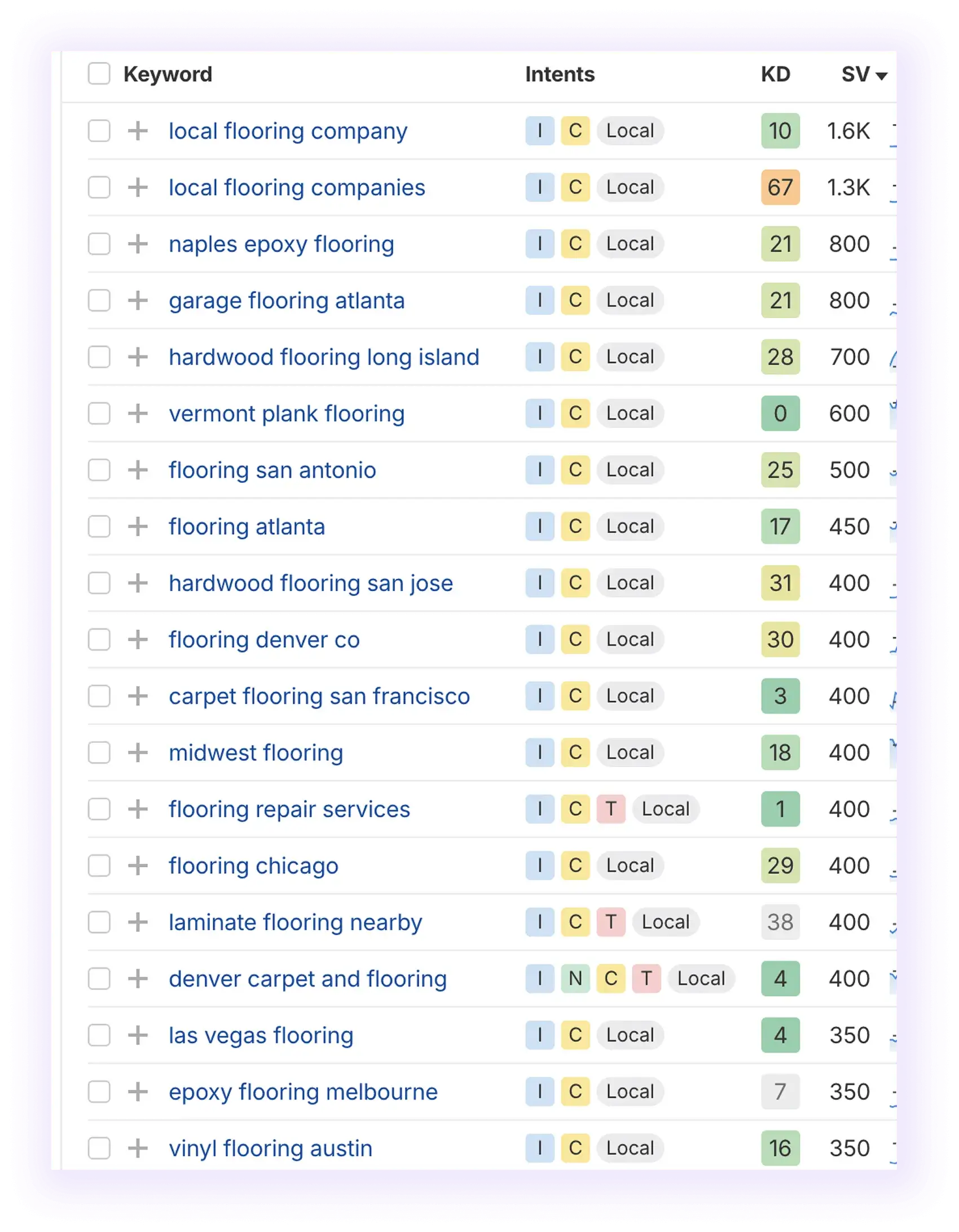
You’re almost done with keywords at this point, but most of the work is still ahead. If you need help with turning these keywords into a real strategy, contact our flooring SEO agency, and we’ll show you the way, just like we did with 75+ others.
The next step is to organize your website so that search engines can understand and find your pages when clients search for the right keywords.
Every flooring website should include at least three core pages:
Make sure these main pages appear in your site’s top menu for easy access and better crawlability.
(If you also sell flooring materials, include a separate Products page to feature them clearly.)
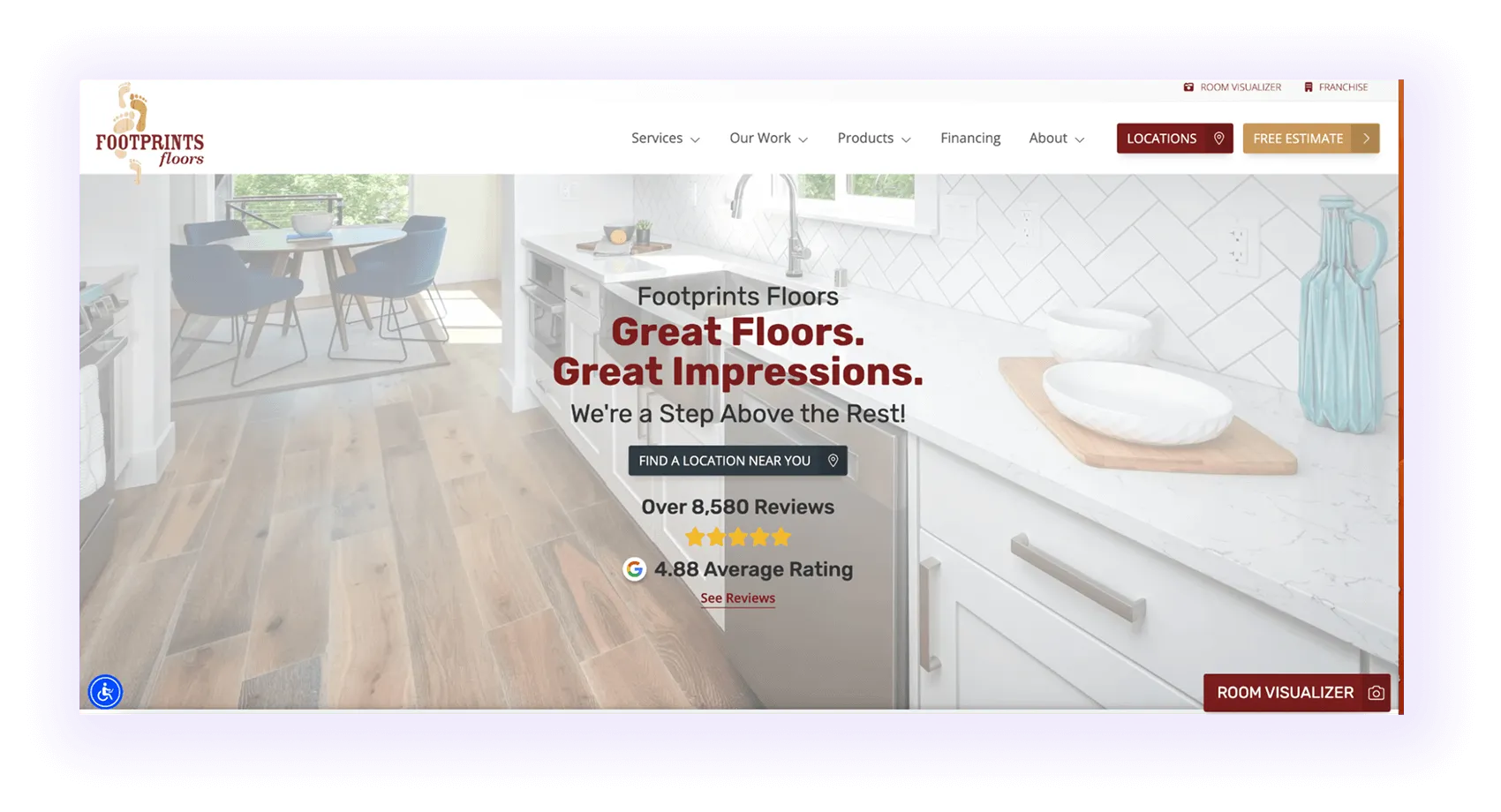
Most flooring companies offer multiple specialties, such as:
Create a dedicated page for each service you offer. This lets you target specific keywords and helps people quickly find what they need.
Link all service pages under the Services tab in your main menu. It makes navigation simple for users and helps Google better understand and rank your site’s structure.

Flooring companies often serve more than just homeowners. Many also handle projects for offices, schools, restaurants, and industrial facilities, each with unique flooring needs.
To make navigation clear, group your offerings into two main sections:
Organizing your site this way signals to Google that you serve multiple markets, and doesn’t confuse the potential clients when they land on your site.
Some flooring sites even use a page titled For Businesses to show their commercial expertise.

Your clients need help fast, so they are searching locally, something like:
You need a dedicated local page for each service area you cover if you want to show up for these searches.
Also, include those pages in your top menu or under a Locations tab so visitors can find them quickly.

Pro Tip: Add an interactive service-area map to your site. It helps users see at a glance whether you serve their city or neighborhood, and strengthens your local SEO visibility.
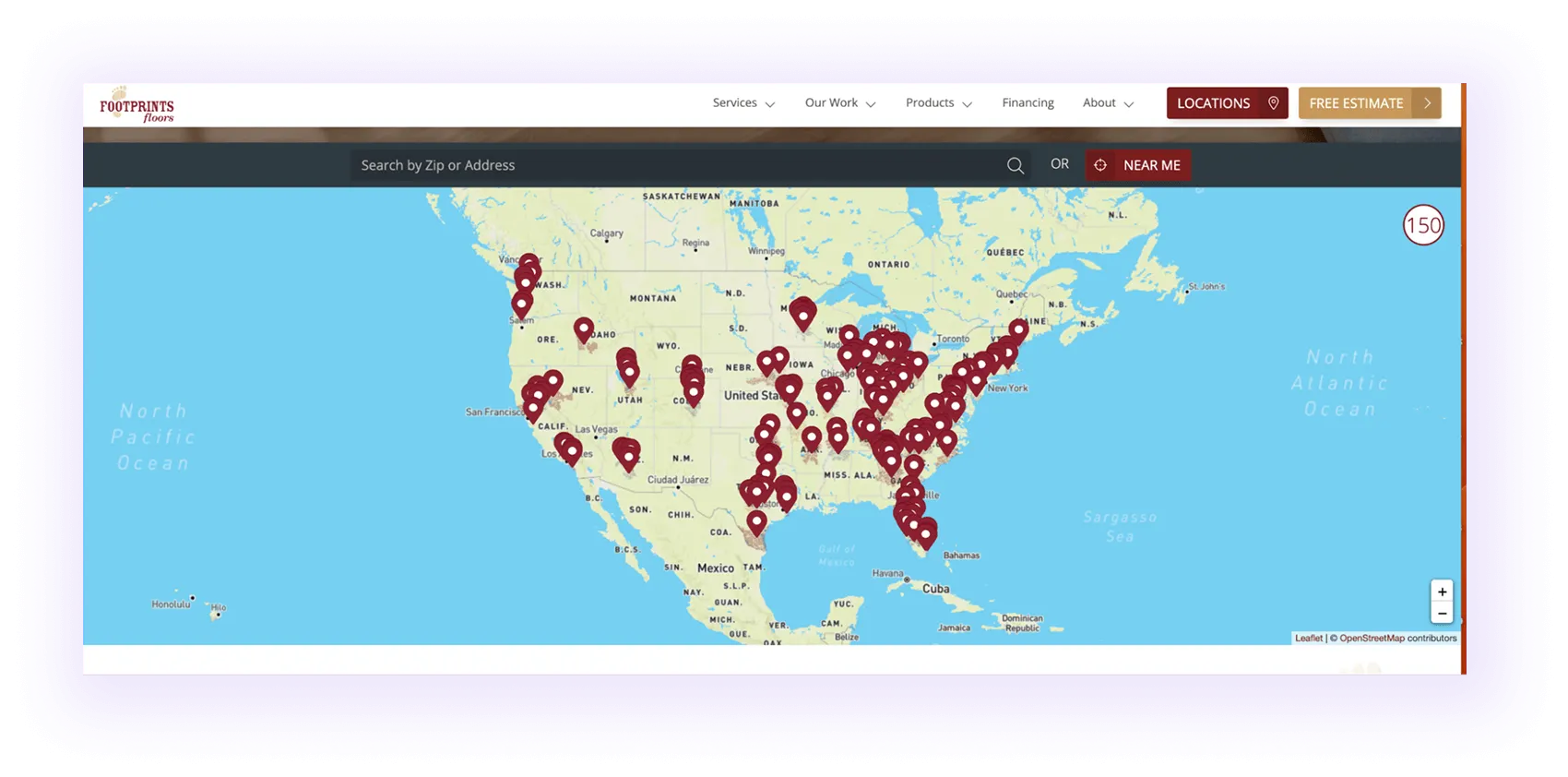
Before hiring a flooring company, most people head to Google with questions, not quotes. They want to learn first. Maybe they’re comparing materials, figuring out what fits their budget, or just looking for design inspiration. Searches often sound like:
Publishing helpful blog content answers these exact questions. It positions your company as a trusted expert long before the homeowner’s ready to buy, so when they are ready, they already know who to call.
Later in this guide, we’ll show you how to build a blog strategy that turns those early readers into customers.
Stop Guessing Your Flooring Website Structure—We Will Show You Exactly What Pages You Need
Just copying what competitors have or doing the basics might not be enough to rank in a competitive environment like flooring. So, if you need support at some point, contact our flooring SEO agency, and we’ll share the secrets of the flooring website hierarchy and even more.
You already have local pages, but they’re not enough to capture clients or rank you locally.
Local SEO comes down to strategy. The right approach depends on how far your business reaches. There are two main types: local and national flooring companies.
Here’s how each approach works, and how to use them to dominate your service areas.
Here’s what to do if you’re a flooring company working in a single city or region:

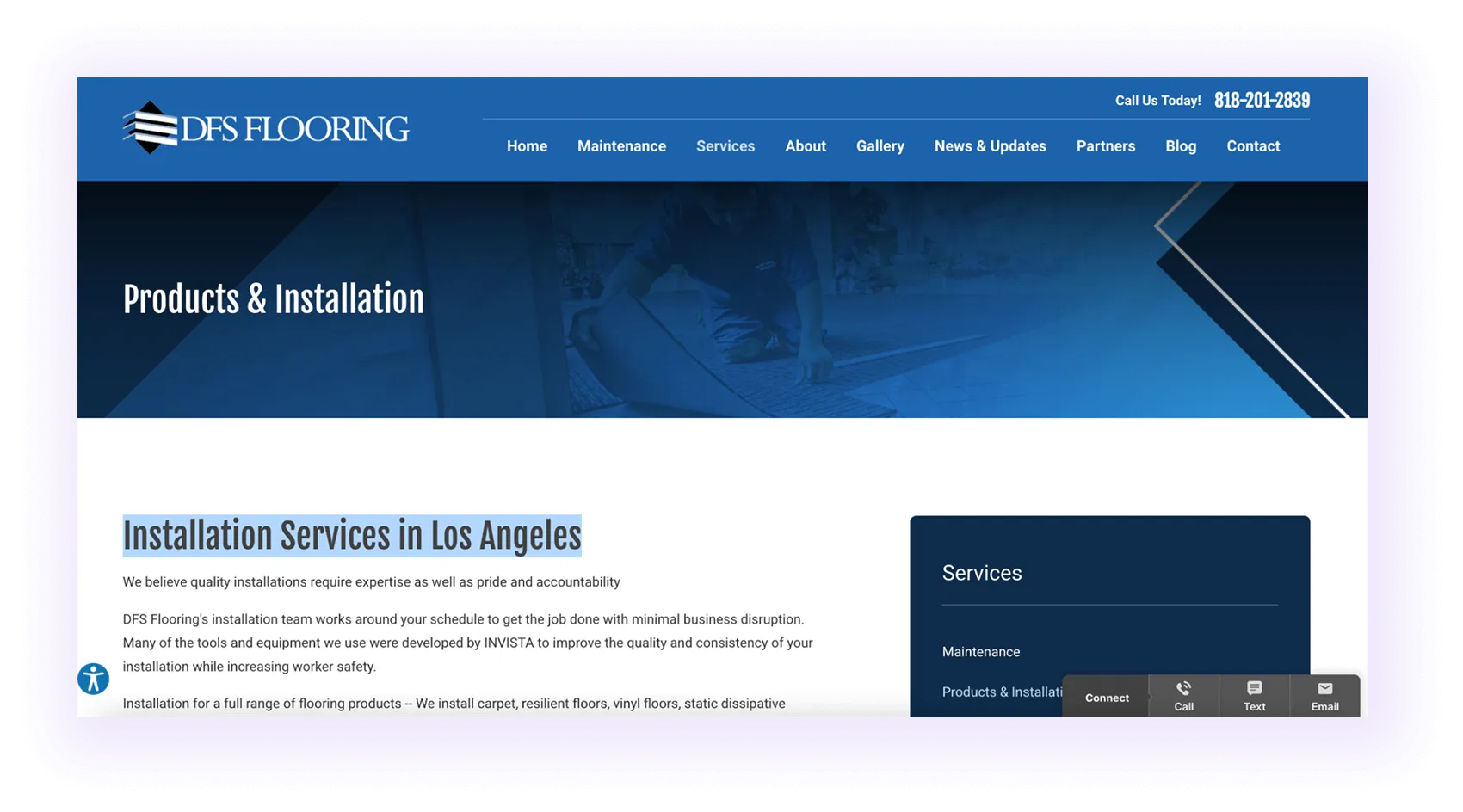
Consistently using your location in key pages makes it easier to rank locally.
If your flooring business serves multiple cities or states, you need to implement a couple more steps:
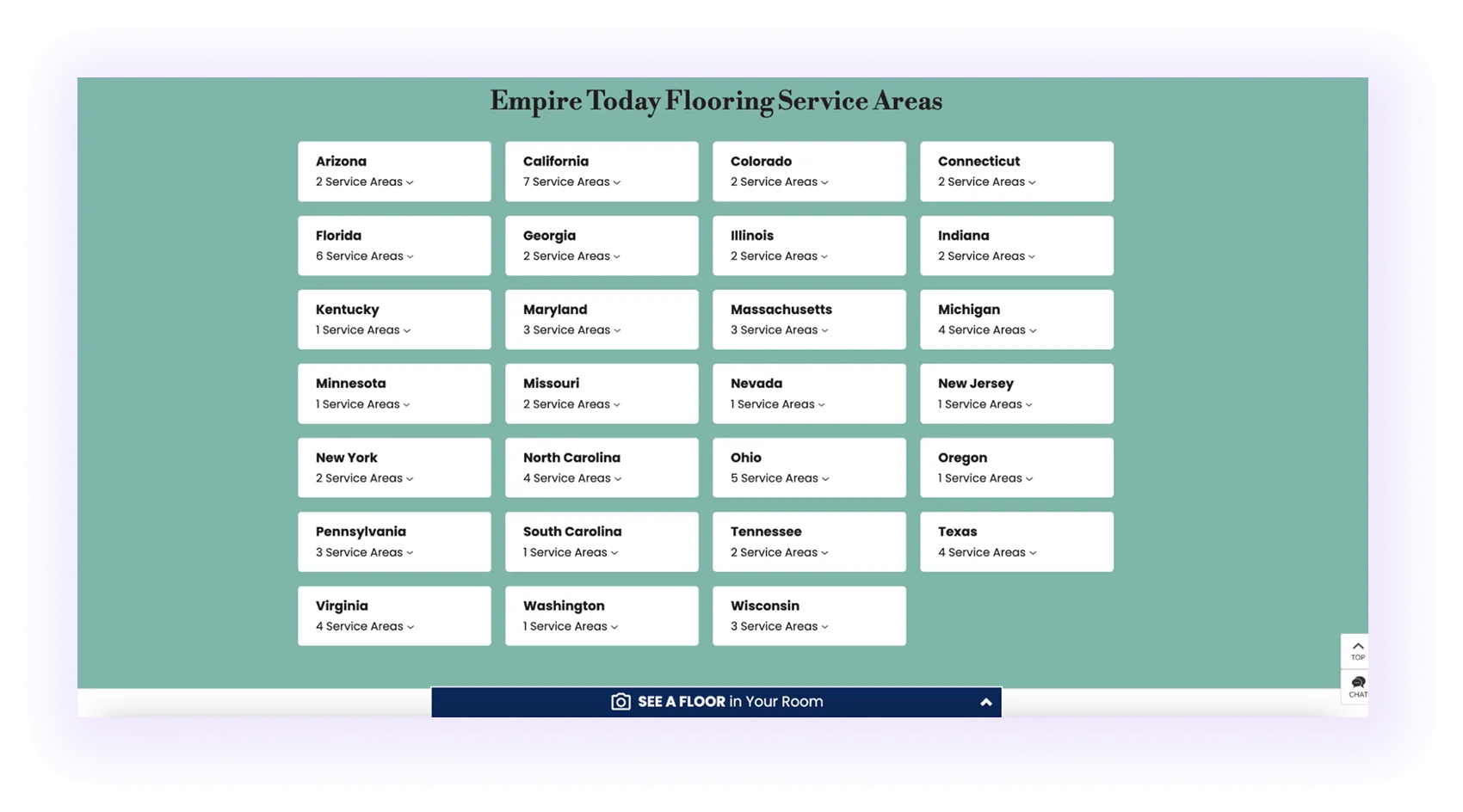
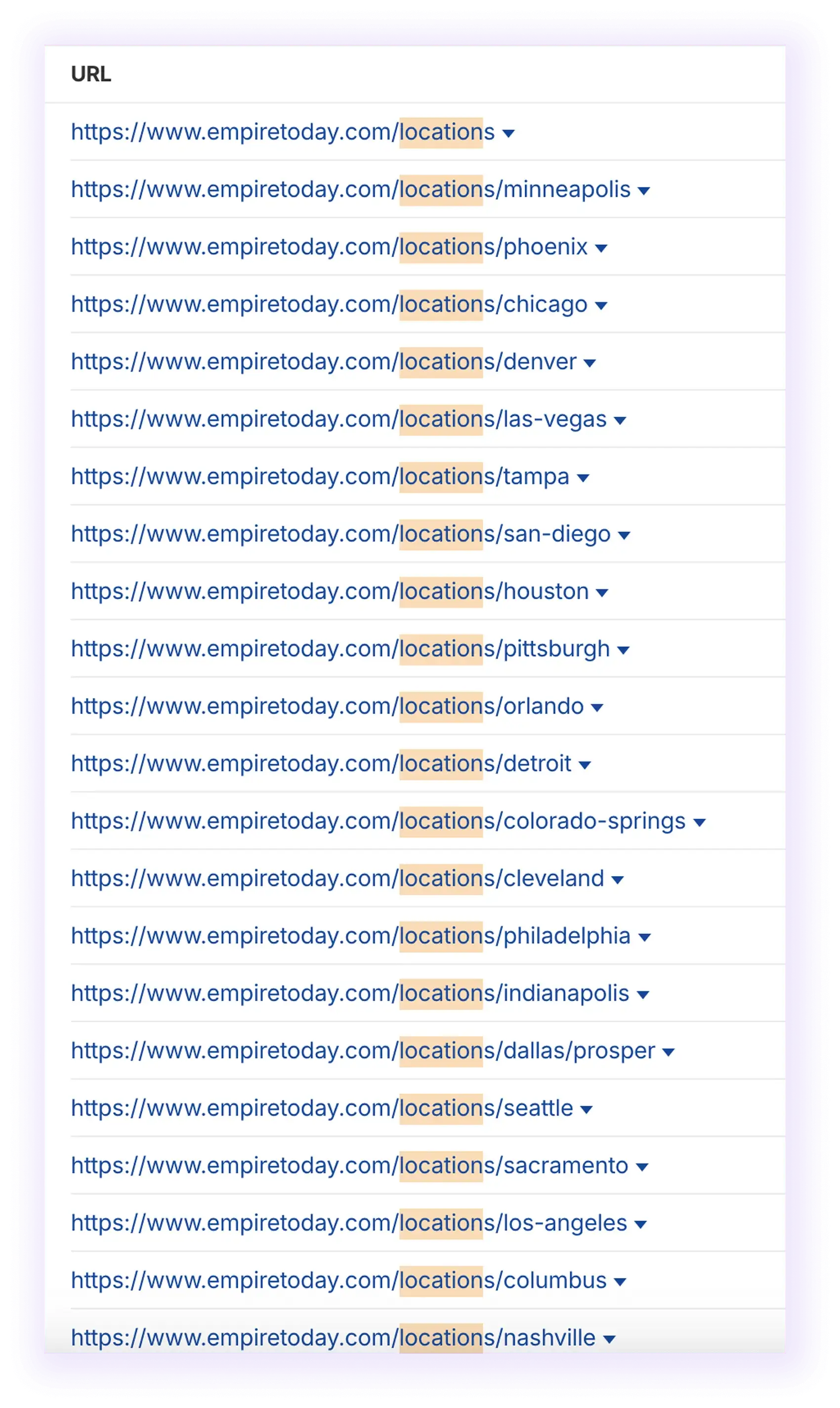

The hidden jam of the local flooring SEO: Google Business Profile.
It helps you show up on Google Maps when customers search there for nearby keywords (“flooring installers near me” or “vinyl floor repair in [City]”).
Here’s how to get it right:
Here is an example of a well-optimized Google Business Profile for a flooring company.
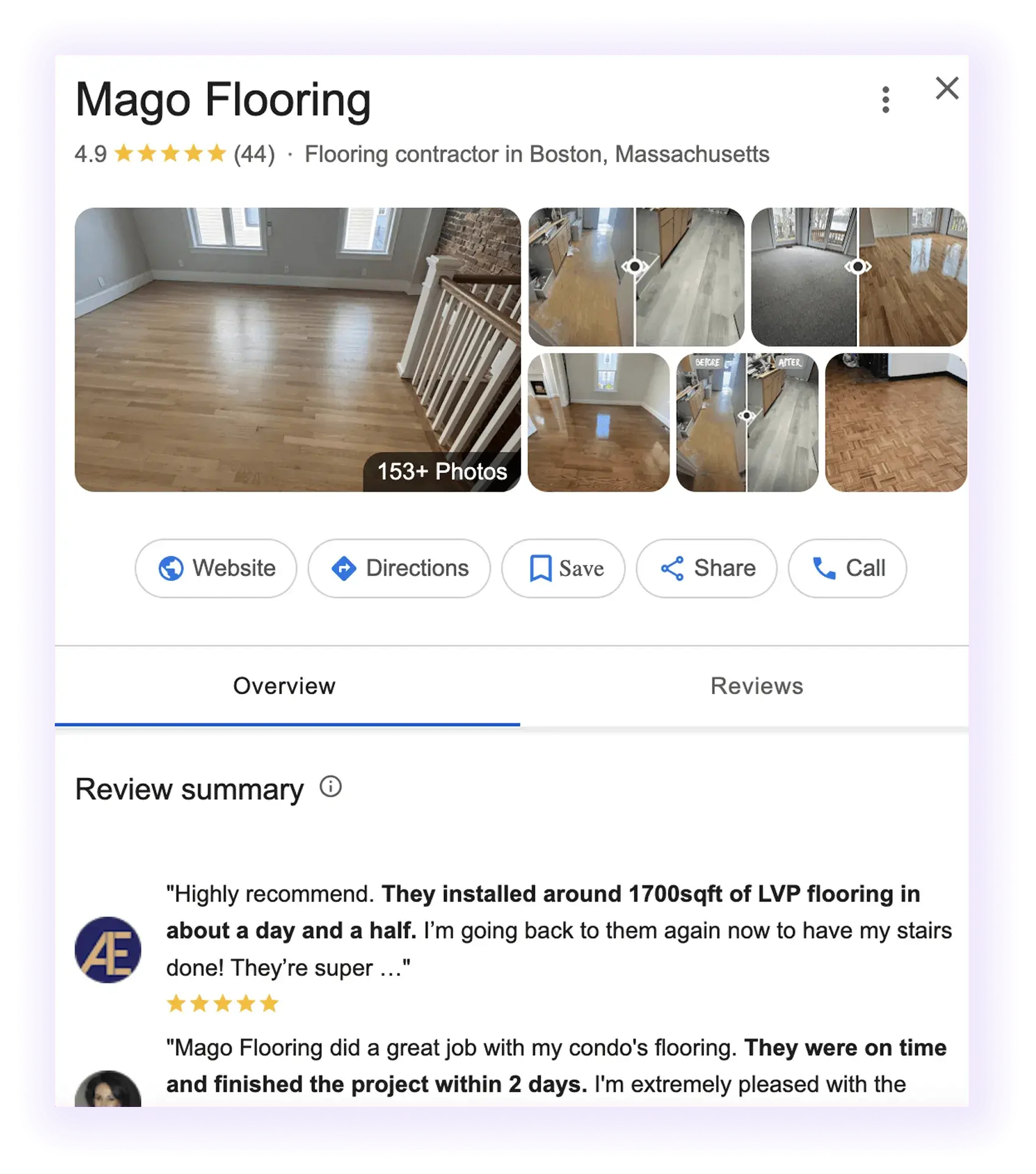



With proper GBP, Google will start showing your profile to local searchers on the map.
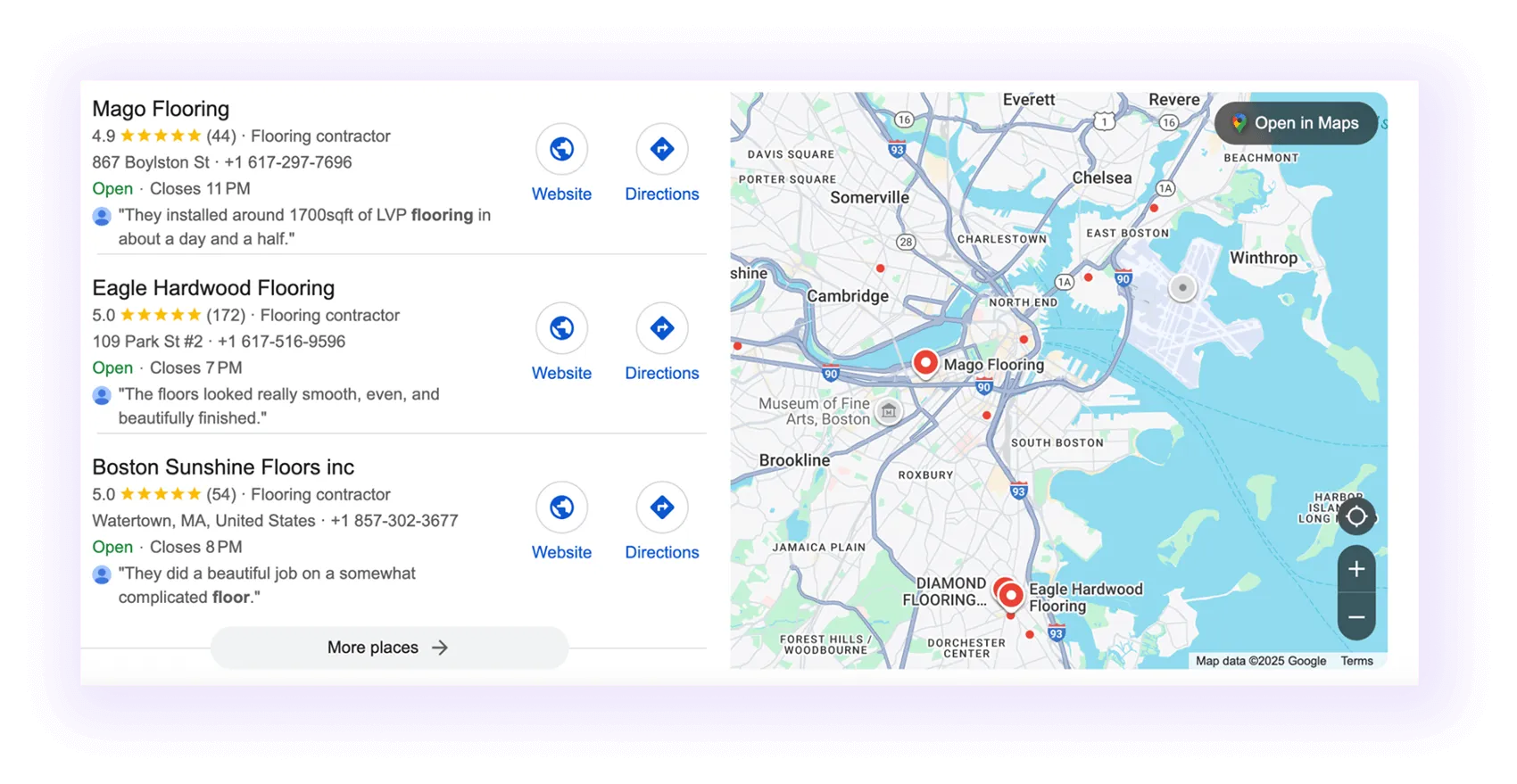
Now let’s create strong, original content that backs up all the great work you did up to this point. Without it, you won’t rank or convert visitors. So, here’s how to create that great content:





We’ve covered why blogs matter; now let’s focus on how to make them perform.
This approach connects your informational blogs to your main service pages, helping both rank higher. For example, if your service is “hardwood floor installation,” create supporting blogs like:
Each blog links back to your main “hardwood installation” page, signaling to Google that you’re an authority on the topic.
How to find these topics: Google’s People Also Ask, Related Searches, Ahrefs, and SEMrush.
Example: Ahrefs’ Questions section for “flooring installation” shows keyword ideas directly tied to what your customers want to know.
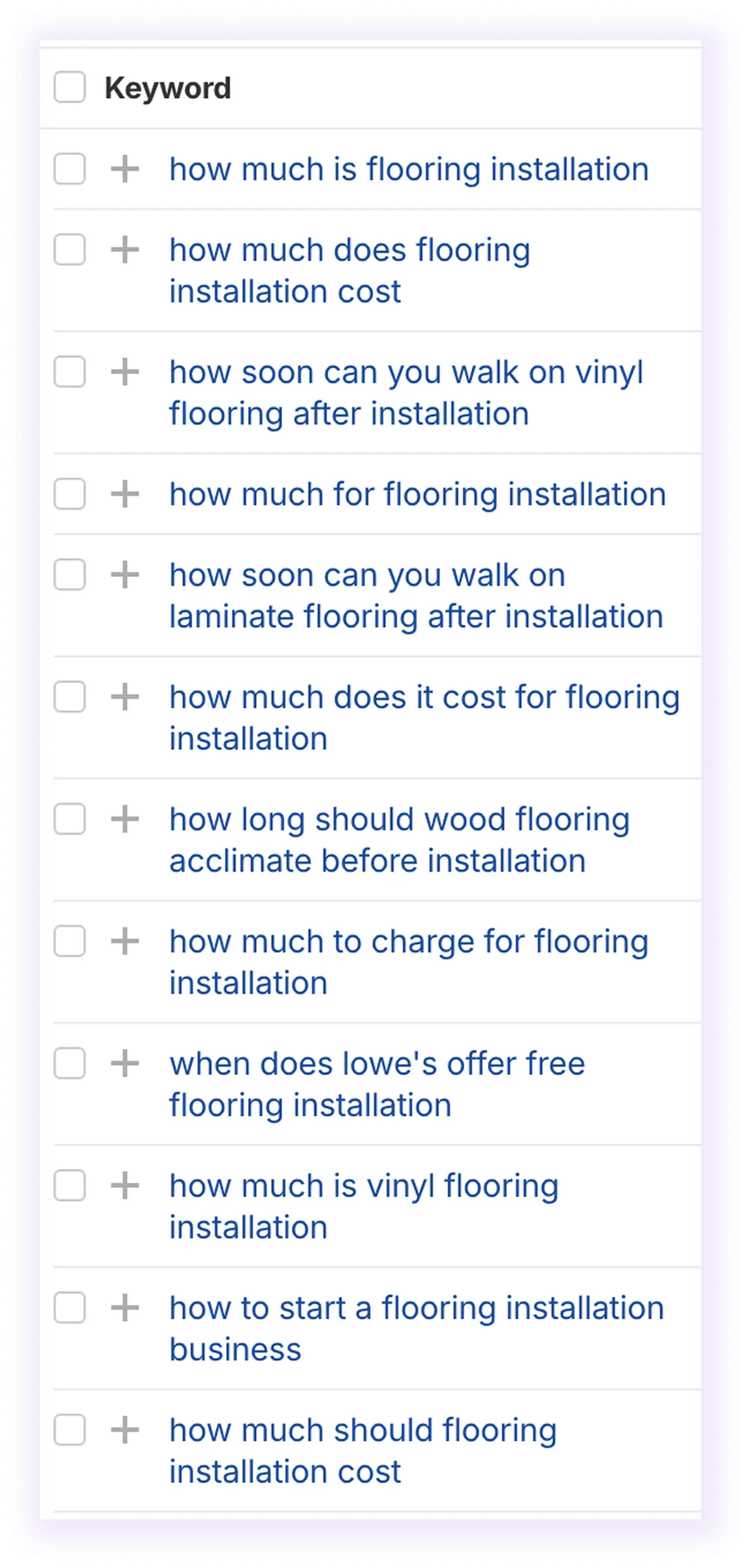
Example: People Also Ask and Related Searches for “flooring installation.”
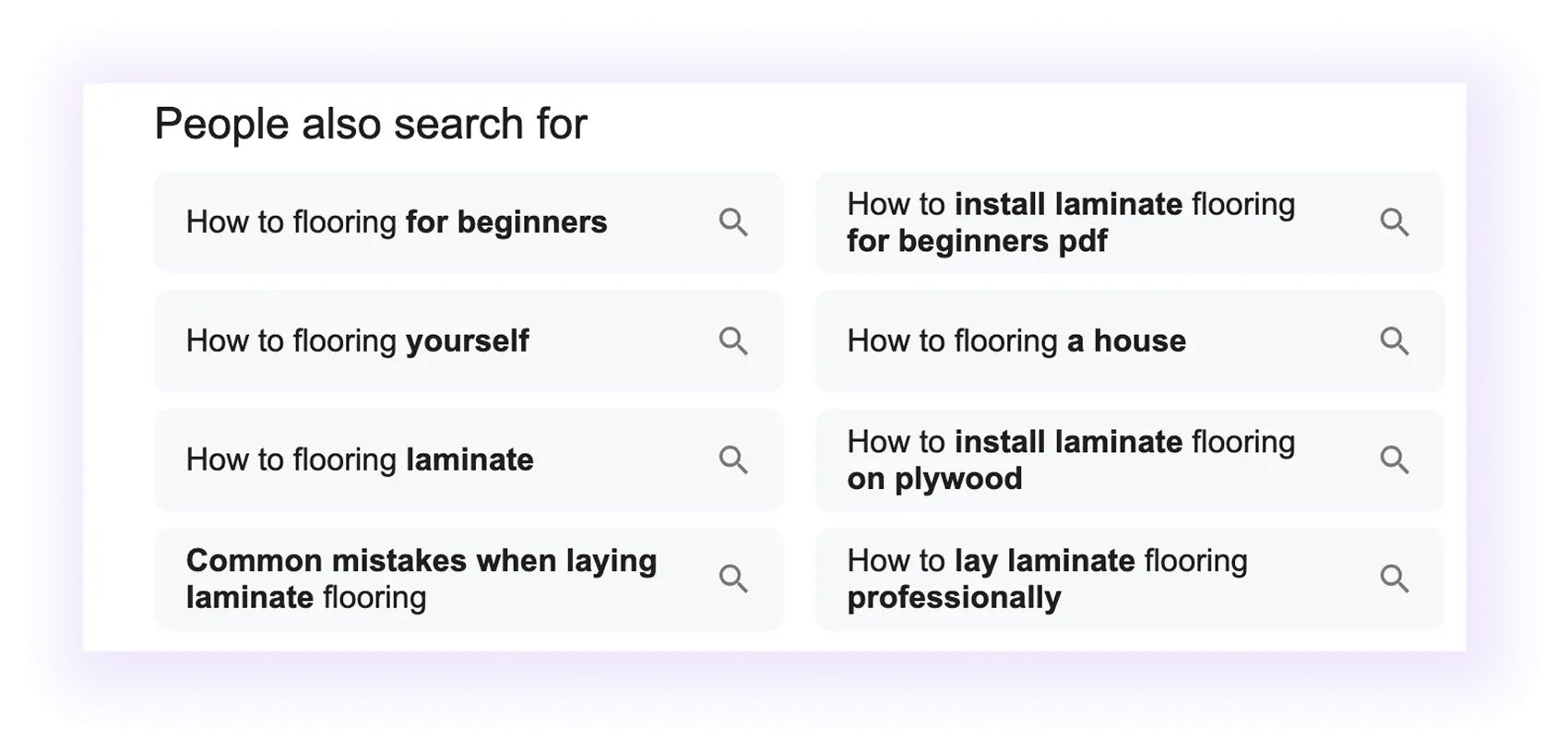
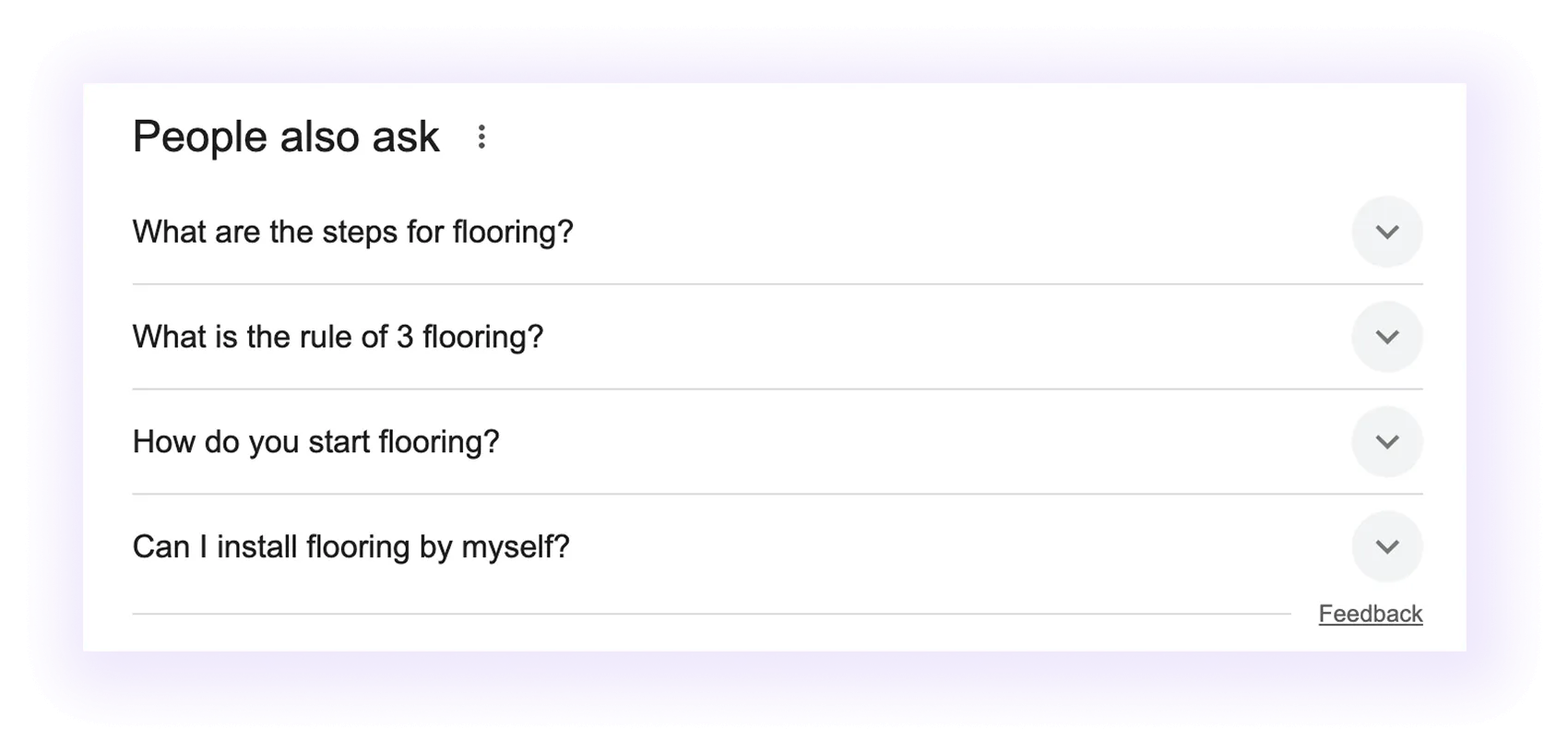
Quality beats quantity. Make every blog useful, visual, and optimized:
Well-crafted content proves your flooring expertise and keeps readers coming back.

Technical SEO for flooring companies ensures Google can find, understand, and rank your site, while providing visitors with a fast, smooth experience. It has a few important elements, so let’s explore them.
Before Google can rank your flooring website, it must crawl and index it, which means its bots scan your pages to understand your content.
To optimize crawlability and indexability:
This helps Google understand which pages are most important to crawl and rank first.
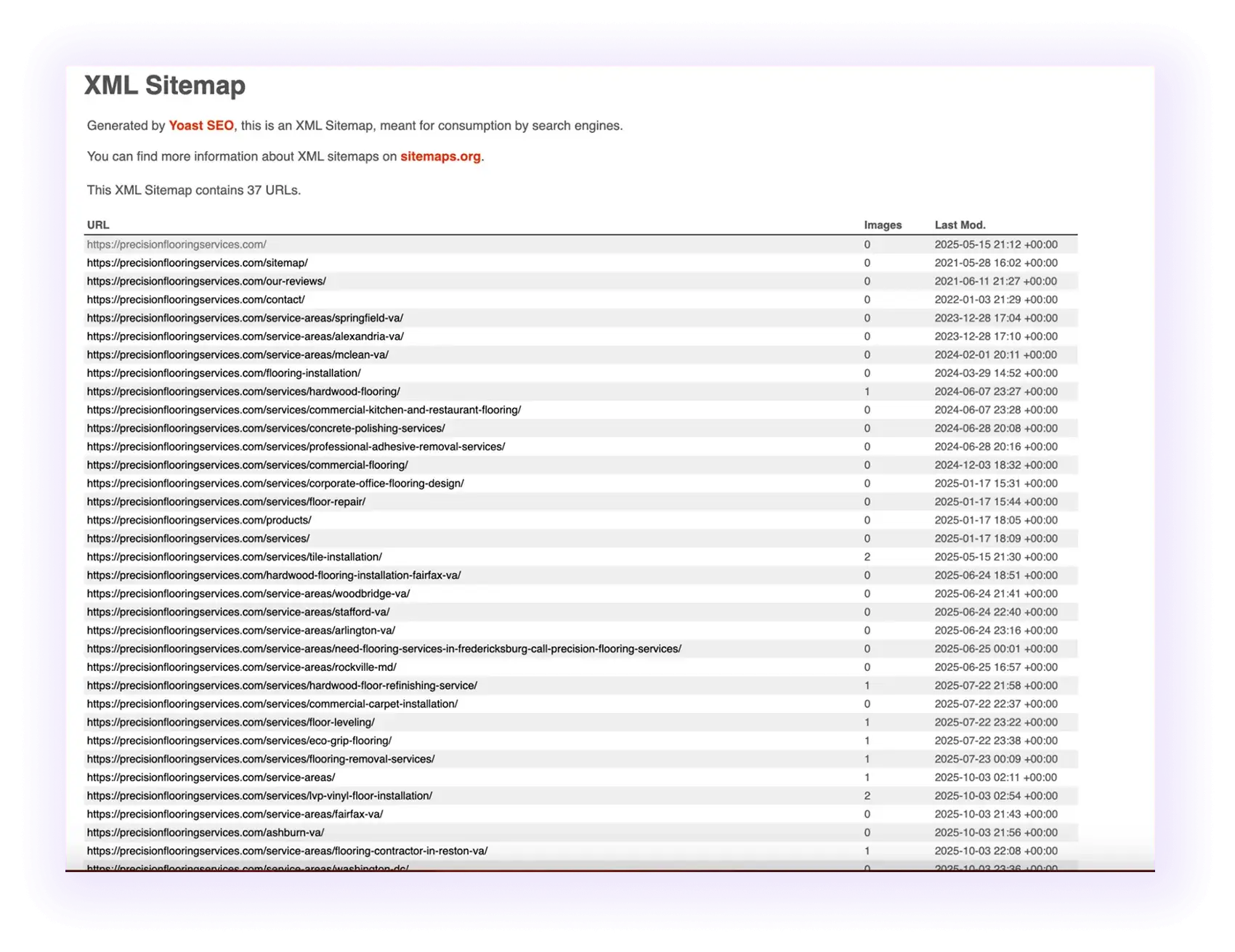
Together, your sitemap and robots.txt file help Google find, understand, and rank your flooring website more efficiently.
Adding structured data (schema markup) helps Google understand your flooring business and boosts your chances of showing up in rich results like FAQs, reviews, and service details.
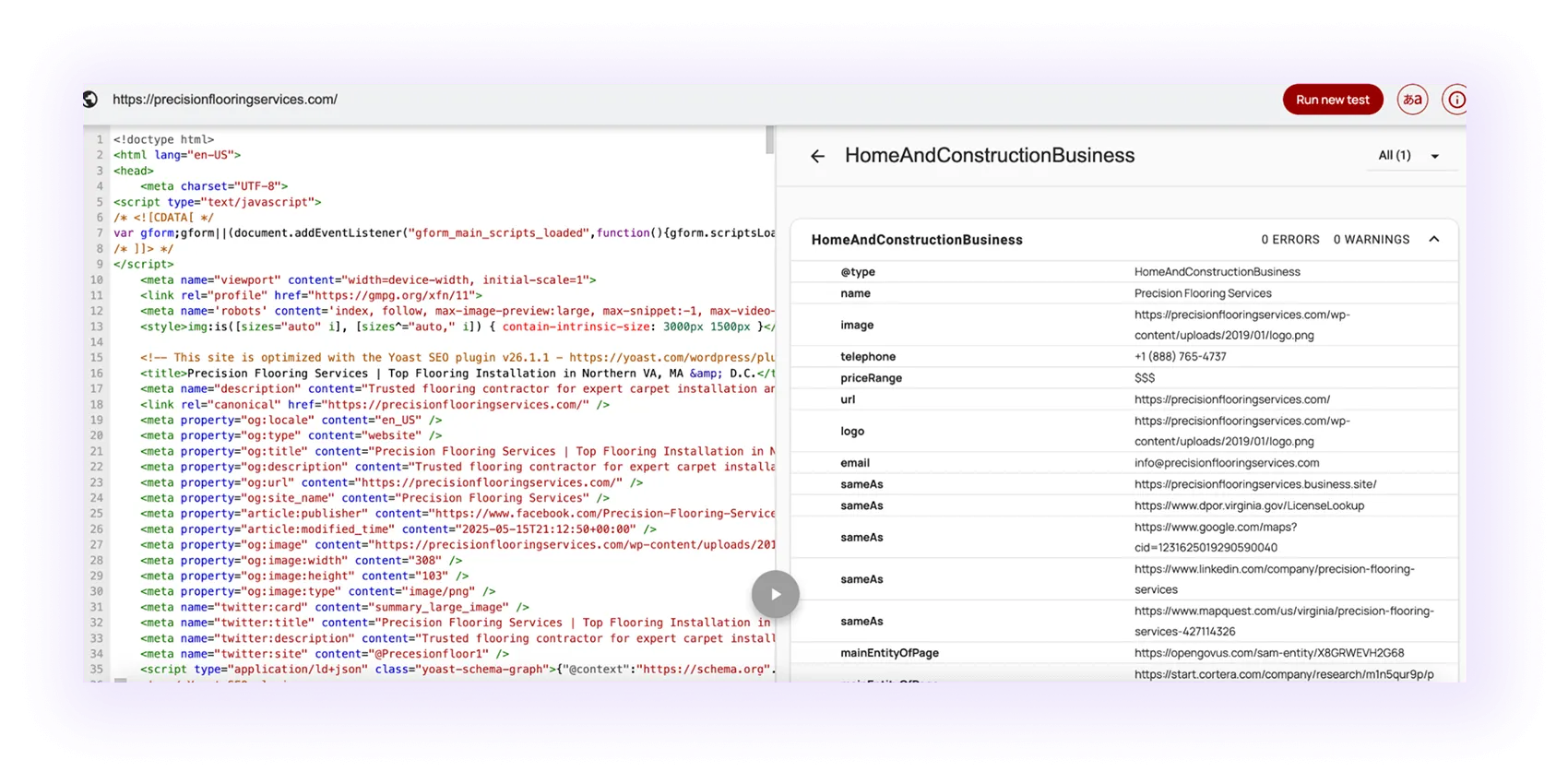
A clear URL structure helps users and Google understand your pages while improving crawlability and SEO.
Examples:
www.yourflooringcompany.com/services/hardwood-floor-installation
www.yourflooringcompany.com/page?id=12345
Strong internal links do two key things: they help visitors find what they’re looking for and show Google how your flooring pages connect, improving rankings across your site.
Here’s how to build effective internal links:
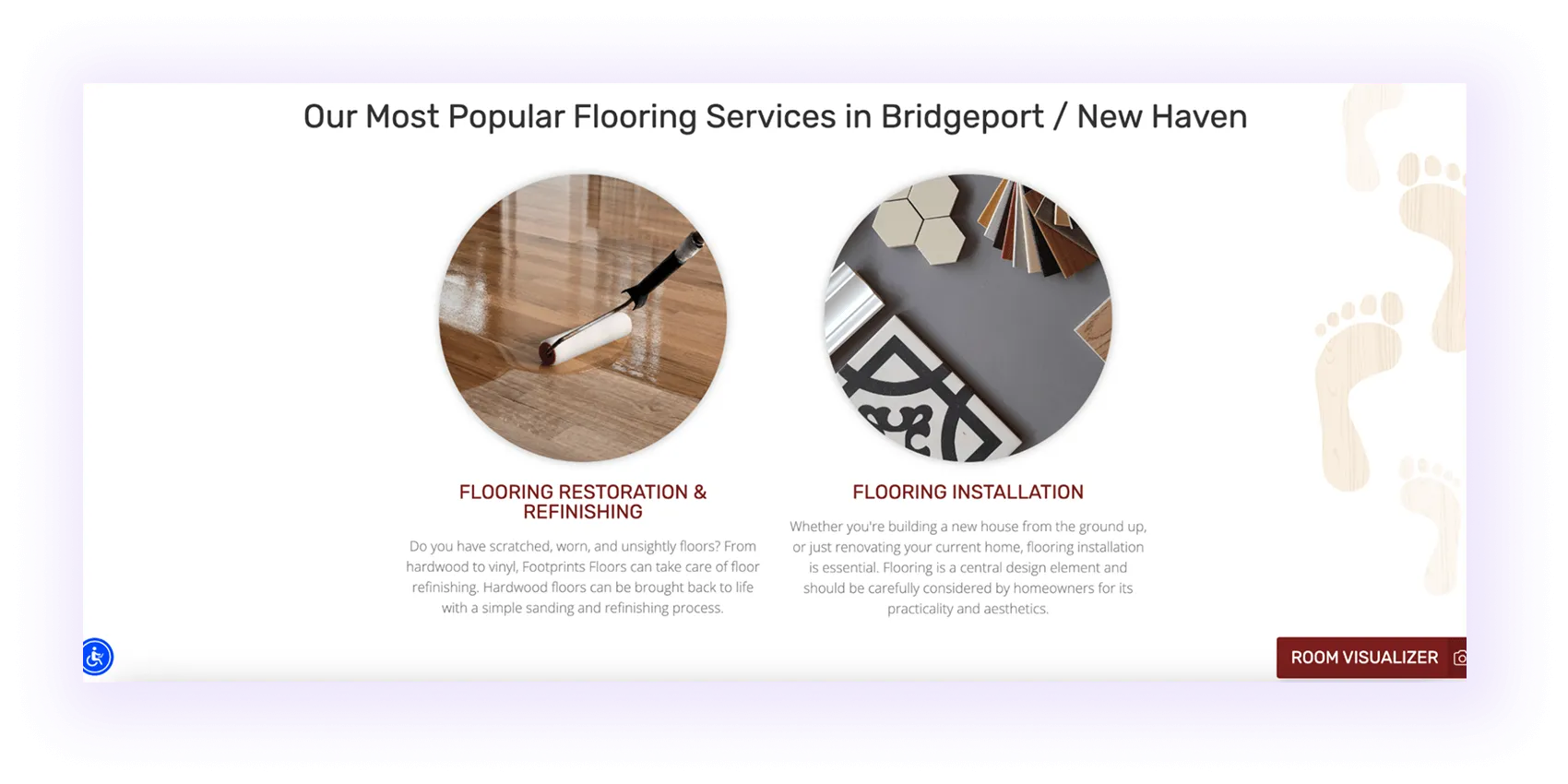
Example: On “vinyl floor installation,” include links to “vinyl installation in boston” and “vinyl installation in cambridge.”
Internal linking should feel natural and guide visitors deeper into your site.
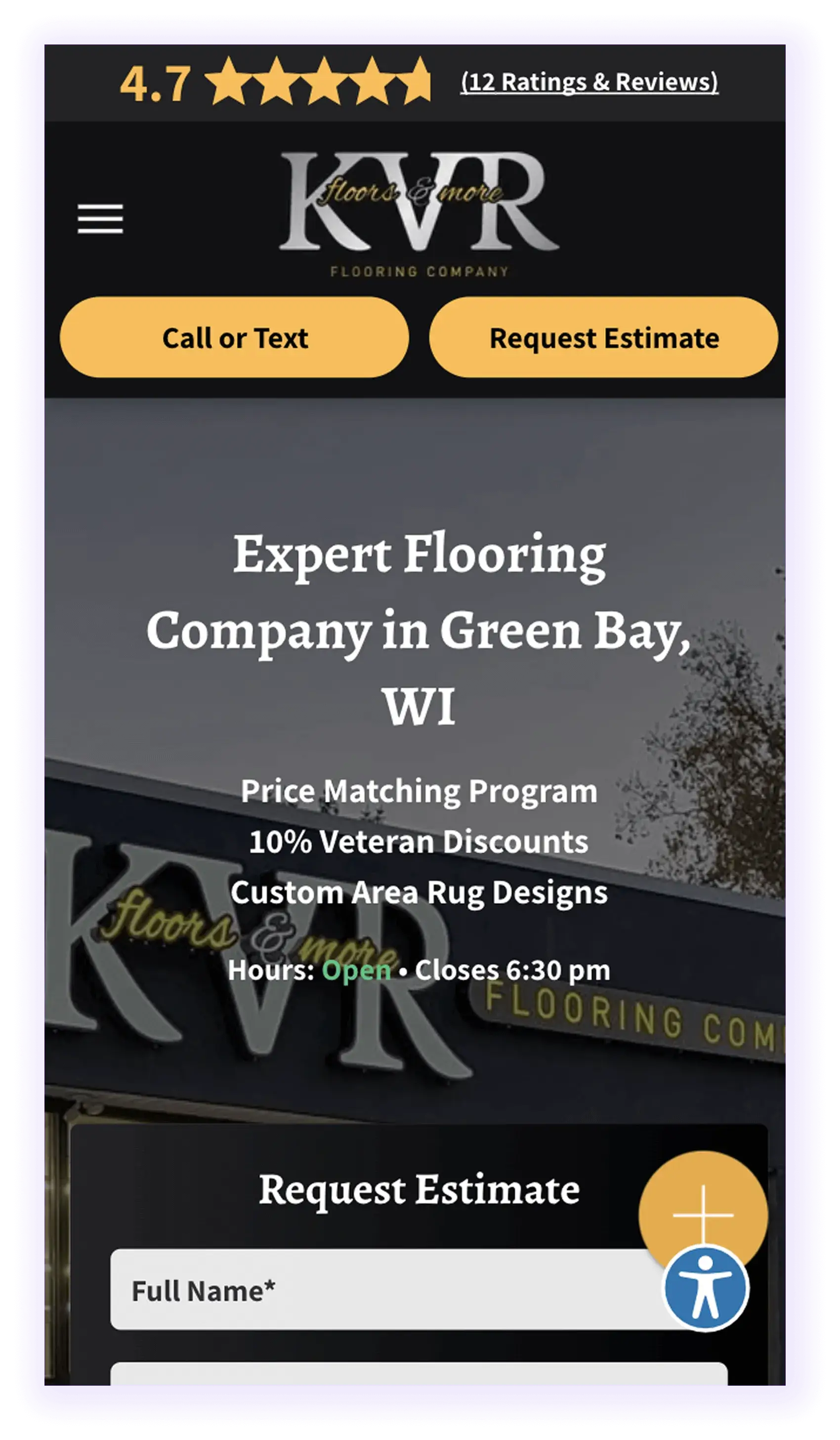
Your customers aren’t sitting at a desk when they search for flooring; they’re on their phones, comparing materials or booking estimates between errands.
Your site should work properly on mobile, and fit these standards:
Below is how your website’s mobile version should look.
Speed matters for both mobile and desktop users. A fast flooring website keeps visitors engaged, reduces bounce rates, and improves your Google rankings.
How to optimize speed:
Test performance regularly to keep things running smoothly. Use:
1. Google PageSpeed Insights: Scores your site on mobile and desktop, highlights issues, and measures key Core Web Vitals:
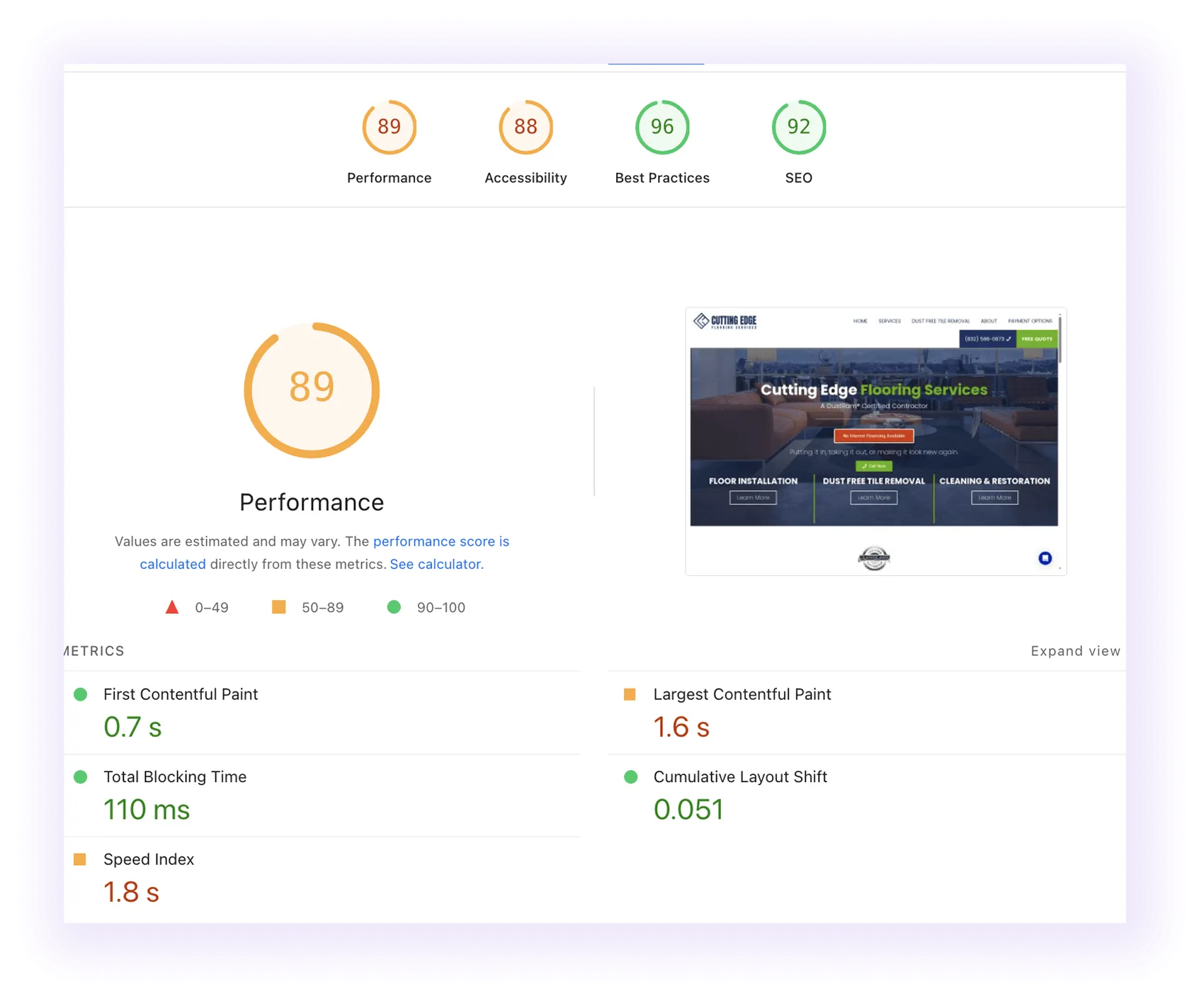
2. GTmetrix: Provides deeper insights on load times, file size, and requests, with actionable tips for improvement.
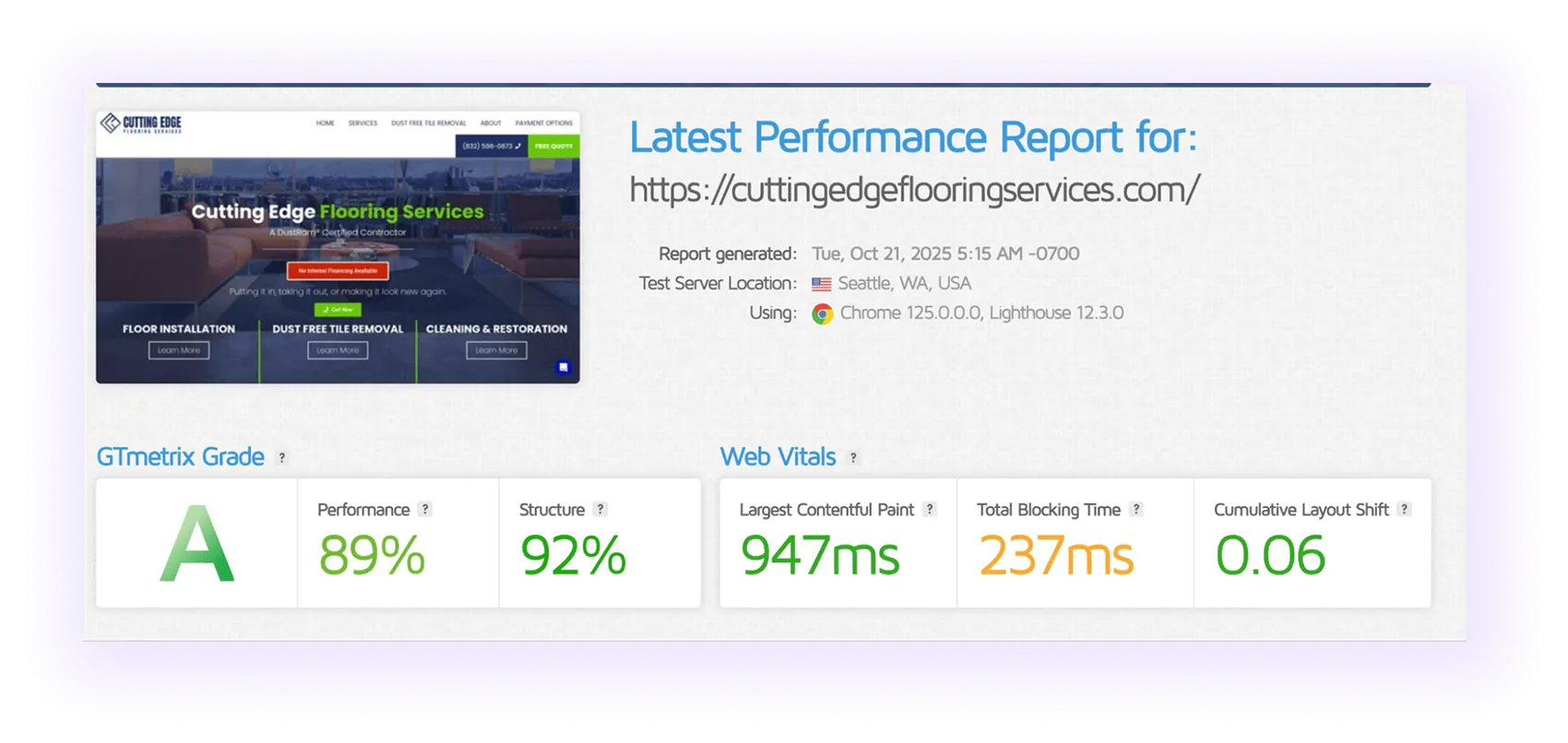
Share the results with your web developer to fix performance issues, improve Core Web Vitals, and deliver a faster, smoother flooring website.
Minor technical issues can pile up and hurt your performance, especially when you’re adding new services, updating designs, or publishing content.
Regular audits catch those problems before they cost you traffic. Use these tools for your checks:
No time to troubleshoot? Our flooring SEO agency can manage tech audits for you, keeping your site fast, clean, and ready to convert.
To rank higher and earn Google’s trust, your flooring company needs strong backlinks, links from reputable sites that signal authority.
The three best link-building strategies are:
Here’s how each can boost your visibility.
Content-based link building starts with guest posting and link insertion. Trusted flooring-related sites for both are:
Guest Posting: Write a high-quality article for a relevant website and include a link back to your service page.
Example: Publish “Choosing the best hardwood flooring for your home” on a remodeling blog with a backlink to your “hardwood floor installation” page.
Link Insertion: Find existing articles where your expertise adds value, then request a contextual link.
Example: Add a link to your “vinyl floor installation” page in an article about “top flooring options for kitchens.”
Both strategies help build authority, drive referral traffic, and improve your flooring site’s SEO visibility.
Local Directories:
Industry-Specific Directories:
National Directories:
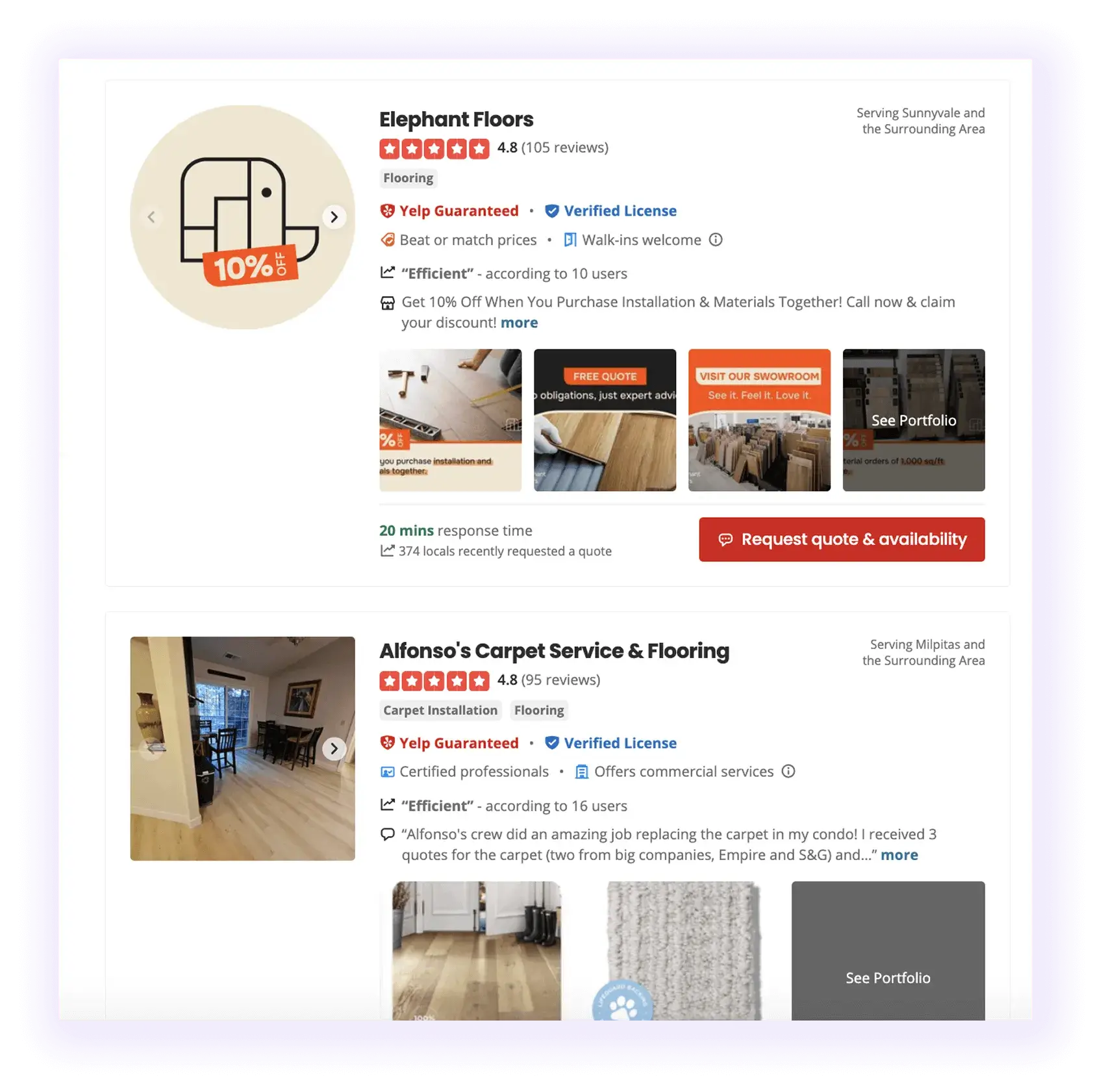
Digital PR helps your flooring business earn credibility fast by getting featured on major industry and news websites like Floor Trends Magazine or Forbes. These mentions not only boost visibility but also earn powerful backlinks that improve SEO.
To run a successful digital PR campaign, focus on getting featured in reputable home improvement or design outlets. Share original insights, data, or flooring trends with a strong, timely angle that interests editors. Keep your pitch short and relevant, and when your story gets published, that backlink builds authority and boosts your rankings.
Example: “The Rise of Eco-Friendly Flooring: How Sustainable Materials Are Changing Home Renovations in 2025.”
Once your SEO strategy is in place, track performance and refine what’s working. Focus on these key metrics and tools:
The right flooring SEO system attracts clients who value quality, not discounts. Contact us, and let’s make your website your best salesperson.
Submit the form - Get Free Proposal
%202.png)
24 hours